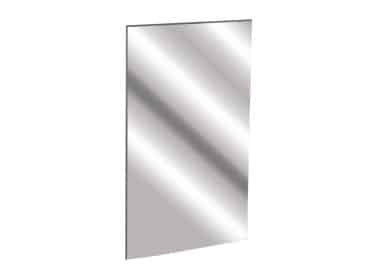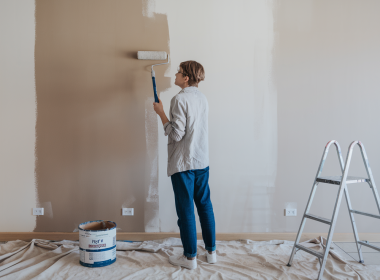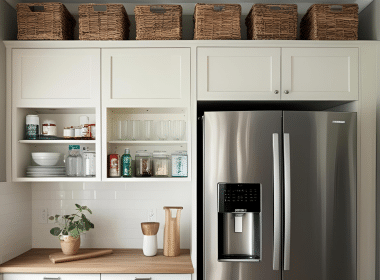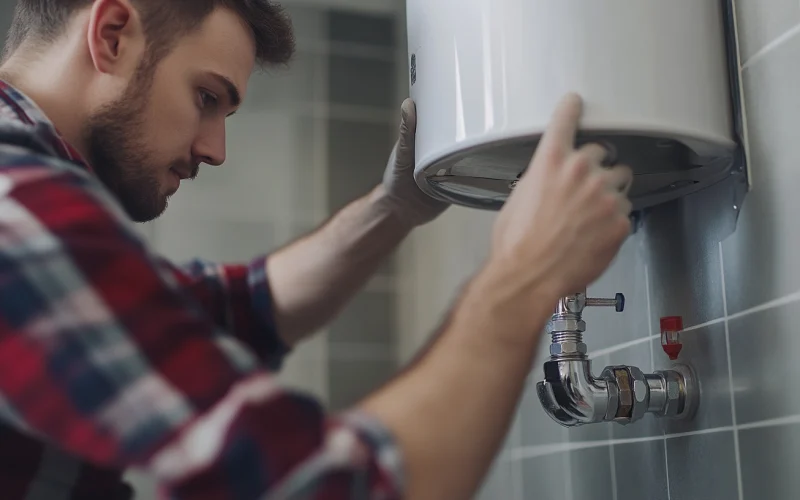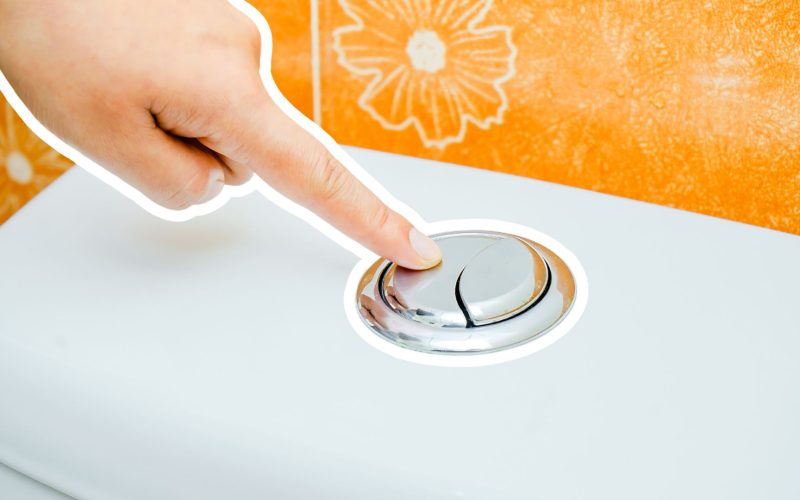Waking up to no hot water can ruin your day.
We’ve all been there – turning on the shower, expecting a warm stream, only to be hit with icy cold water.
It’s frustrating and can throw your whole routine off balance.
Hot water is essential to our daily lives, whether for showering, washing dishes, or laundry.
Don’t worry – I’m here to help you regain your hot water.
In this ultimate guide, I’ll walk you through the steps to troubleshoot and solve your hot water problems,
It is potentially saving you time and costly repair bills.
I’ll cover the most common causes of no hot water, from simple fixes you can handle yourself to more complex issues that may need professional help.
By the end, you’ll be ready to tackle hot water troubles confidently.
Main Causes of No Hot Water
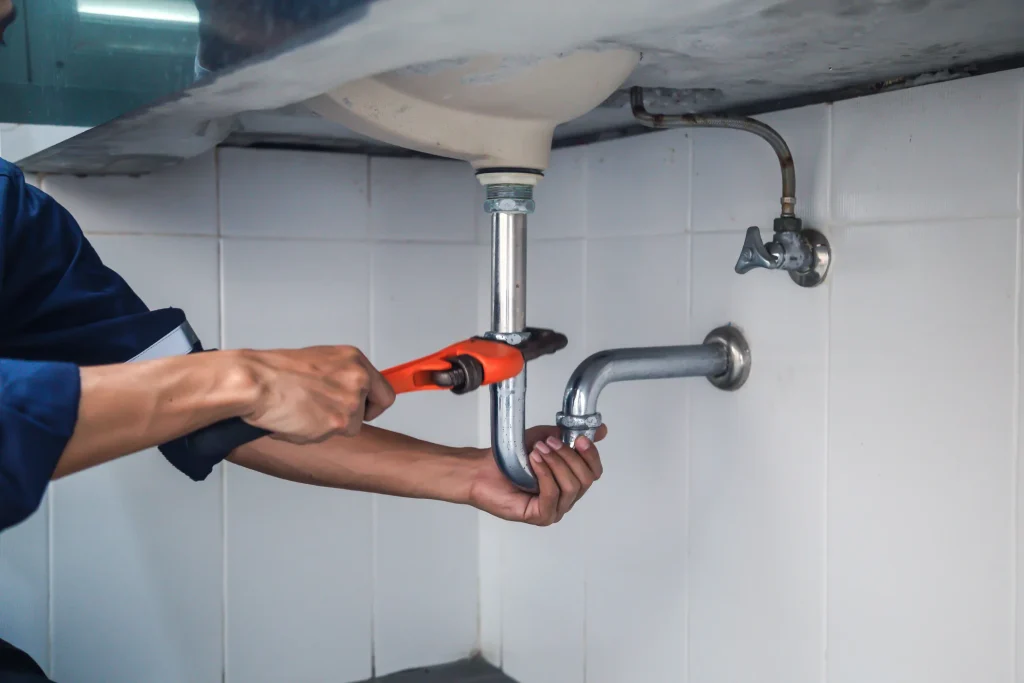
When you discover no hot water, check your circuit breaker to ensure it hasn’t tripped.
For gas heaters, verify the gas supply is on. Next, visually inspect your water heater for any obvious leaks or damage.
These quick checks can often reveal simple issues you can address immediately.
Common Issues
The most frequent causes of no hot water include power supply disruptions, thermostat malfunctions, worn-out heating elements, sediment buildup, or leaks in the system.
Understanding these common problems can help you troubleshoot more effectively.
Safety Precautions
Before attempting any inspection or repair, always turn off the power supply to electric water heaters at the circuit breaker.
For gas heaters, shut off the gas supply valve.
If you smell gas, evacuate the area immediately and call your gas company from a safe location.
Never attempt to repair gas leaks yourself.
1. Gas Leak
Symptoms
- A strong odor resembling rotten eggs is the primary indicator of a gas leak.
- You might also notice hissing sounds near gas lines or see damaged connections.
Actions
- Immediately turn off the main gas valve to your home. It’s usually located near your gas meter.
- Avoid using electrical devices in the house, including light switches or cell phones.
- Evacuate your home and call your gas company from a safe distance. If necessary, use a neighbor’s phone.
Safety Tip
- Gas leaks are extremely dangerous and can lead to explosions.
- Never attempt to locate or repair a gas leak yourself.
- Always leave this to trained professionals.
2. Leaking Water Heater Tank
Symptoms
- The most obvious sign is water pooling around the base of your water heater.
- You might also notice damp spots on the floor or walls near the heater or a decreased hot water supply.
Actions
- Carefully inspect all connections, valves, and pipes around the water heater for any signs of leakage.
- If you find loose connections, try tightening them with a wrench, but be careful not to overtighten them.
- Unfortunately, replacement is usually the only option for actual tank leaks, and they can’t typically be repaired effectively.
Maintenance Tip
- Visually inspect your water heater every few months.
- Look for any signs of corrosion, rust, or moisture.
- Catching leaks early can prevent water damage and extend the life of your heater.
3. Gas Valve Failure
Symptoms
- You may notice that your water isn’t heating even though your gas supply is on.
- The pilot light may also go out frequently or fail to ignite.
Actions
- Ensure the gas valve is fully open and in the correct position. When open, the handle should be parallel to the gas pipe.
- Check if the pilot light is lit. If not, try relighting it following your heater’s instructions.
- The gas valve may be faulty if the pilot won’t stay lit or the burner doesn’t ignite.
Troubleshooting Tip
- If your pilot light keeps going out or your burner won’t ignite, it could indicate a faulty gas valve.
- This is a job for a professional, as working with gas components can be dangerous.
4. Pilot Light Issues
Symptoms
- Upon inspection, your water is cold, and the pilot light is out.
- If the ignition system tries to light the pilot, you may also hear clicking sounds.
Actions
- For older models, follow the manufacturer’s instructions to relight the pilot. This usually involves turning the gas control valve to “Pilot,” pressing it down, and using the spark ignitor or a long lighter to ignite the pilot.
- For newer models with electronic ignition, check the ignition system. You may need to reset it or clean the ignitor.
- If the pilot won’t stay lit, the thermocouple may be faulty and need replacement.
Expert Tip
- Stop trying if you can’t get the pilot to stay lit after a few attempts.
- There could be a more serious issue with the thermocouple or gas valve.
- It’s best to call a professional to avoid any safety risks.
5. Electric Water Heater Malfunction
Symptoms
- You have no hot water, and there are no signs of leakage.
- The problem seems to be electrical.
Actions
- Check your home’s circuit breaker panel. Look for tripped switches related to your water heater and reset them if necessary.
- If the breaker keeps tripping, the heater may have a short circuit or electrical issue.
- If you’re comfortable doing so, test the heating elements and thermostats with a multimeter. If not, call an electrician.
DIY Tip
- Before assuming your heater is broken, verify it’s receiving power.
- Sometimes, the solution is as simple as flipping a circuit breaker switch.
6. Thermostat Malfunction
Symptoms
- Your water isn’t heating to the temperature you set or is inconsistently hot.
Actions
- Check your thermostat settings. The recommended temperature is between 120-140°F for both safety and efficiency.
- If adjusting the thermostat doesn’t help, it may be inaccurate and need replacement.
- Flush your tank to remove sediment buildup, which can interfere with the thermostat’s function.
Maintenance Tip
- Test your water heater’s temperature periodically with a thermometer at the nearest faucet.
- This can help you catch thermostat issues early.
7. Faulty Heating Element
Symptoms
- You have little or no hot water because one or both heating elements aren’t working properly.
Actions
- Test the heating elements with a multimeter. If one or both show no continuity, they need to be replaced.
- Before replacing, ensure the problem isn’t with the thermostat or power supply.
- If your water heater is over ten years old, consider replacing the entire unit instead of just the elements.
Expert Tip
- Always turn off the power and drain the tank before replacing a heating element.
- If you’re not comfortable working with electrical components, hire a professional.
8. Water Heater Tank Size
Symptoms
- You frequently run out of hot water, especially during peak usage.
Actions
- Calculate your household’s peak-hour hot water demand. A 40-gallon tank typically suffices for 2-4 people, while larger families may need 50-80 gallons.
- If your current water heater doesn’t meet your needs, consider upgrading to a larger tank or a tankless water heater.
- Implement water-saving measures to reduce hot water usage.
Planning Tip
- When selecting a new water heater, consider future needs.
- If you’re planning to grow your family or add hot water appliances, opt for a slightly larger capacity than you currently need.
9. Local Weather Conditions
Symptoms
- Your water takes longer to heat during cold weather, or you run out of hot water more quickly.
Actions
- Insulate your water heater tank with a specially designed blanket. This can reduce heat loss by 25-45%.
- Insulate hot water pipes to minimize heat loss as water travels through them.
- If possible, consider moving the water heater to a warmer location in your home in very cold climates.
Energy Tip
- Proper insulation helps your water heater work more efficiently in cold weather and reduces energy bills year-round.
- The most common hot water problems are power supply issues, component failures, sediment buildup, or leaks.
- Regular maintenance and prompt attention to minor issues can prevent many major problems.
DIY Fixes for Common Issues

While some hot water problems require professional help, simple DIY solutions can resolve many common issues.
Here are some fixes you can try at home to recharge your hot water.
Always prioritize safety and consult your water heater’s manual before repairing.
1. Relighting the Pilot Light
Step-by-step guide for manual and automatic pilot light systems
- Turn off the gas regulator, wait 5 minutes, set it to “pilot,” and use a long lighter to relight it.
- Turn off the regulator, wait 5 minutes, set it to “pilot,” hold the ignition knob for 60 seconds, then set it to “on.”
2. Replacing the Thermostat
Instructions for safely replacing a faulty thermostat
- Turn off the power to the water heater.
- Remove the access panel and insulation.
- Disconnect the thermostat wires.
- Install the new thermostat and reconnect the wires.
- Replace insulation and access panel, then turn on power.
3. Flushing the Tank
Detailed process for draining and flushing sediment from the tank
- Turn off the power and cold water supply to the heater.
- Connect a hose to the drain valve and place the other end near the drain.
- Open a hot water faucet to release pressure, then open the drain valve.
- Once drained, close the drain valve and remove the hose.
- Turn on the cold water supply to flush the tank, then restore power.
4. Replacing the Heating Element
Guide on safely replacing a faulty heating element
- Turn off the power and drain the water heater.
- Remove the access panel and insulation, and disconnect wires from the element.
- Use an element wrench to remove the faulty element.
- Install the new element, reconnect wires, and replace insulation and access panel.
- Refill the tank and restore power.
When to Call a Professional
While DIY fixes can solve many hot water issues, some problems require expert knowledge and specialized tools.
Knowing when to call a professional can prevent further damage to your water heater and ensure your safety.
Here are some situations where it’s best to seek help from a licensed plumber.
1. Complex Issues
- If you have followed all troubleshooting steps and still have no hot water, the problem might be more complex.
- Issues such as a malfunctioning heating element or a broken dip tube can be difficult to diagnose without professional training.
- When DIY efforts fail, it’s crucial to call a professional to avoid further damage to your water heater.
2. Safety Concerns
- Gas water heaters involve risks such as gas leaks and carbon monoxide poisoning.
- These issues can be hazardous and require professional handling.
- Electrical problems, such as malfunctioning thermostats or heating elements, can pose serious safety risks, including electrical shocks or fire hazards.
- Professionals have the tools and expertise to handle these dangers safely and effectively.
3. Replacement Needs
- If your water heater is more than ten years old and frequently needs repairs, replacing it might be more cost-effective.
- Modern water heaters are more energy-efficient, saving you money on utility bills.
- A professional can advise you on the best replacement options for your household’s hot water needs and install the new unit safely.
Calling a professional ensures that complex and hazardous issues are handled correctly.
Maintaining the safety and efficiency of your hot water system.
This is for persistent issues, safety concerns, or when considering an upgrade.
Contact a licensed plumber or water heater specialist to ensure the job is done right.
Conclusion
Having no hot water can be a real hassle, but now you’re equipped with the knowledge to tackle many common issues.
From checking your circuit breaker to relighting the pilot light, these DIY fixes can often get your hot water flowing again.
Regular maintenance is key to preventing problems and extending your water heater’s life.
However, it’s crucial to know your limits. If you encounter gas leaks or complex electrical issues or are unsure about any repairs, don’t hesitate to call a professional.
Your safety is paramount.
Understanding the main causes of hot water problems and knowing when to attempt fixes or call for help can help you handle hot water issues more confidently.
Keep this guide handy, and you’ll be prepared to face any hot water challenges that come your way.


